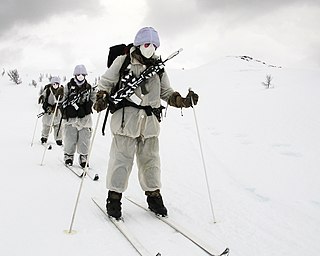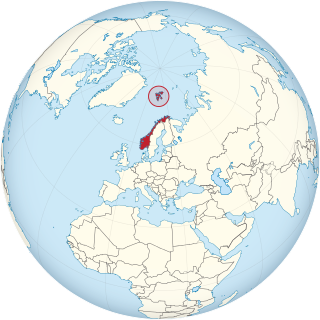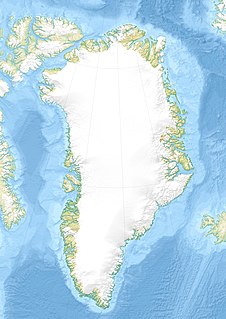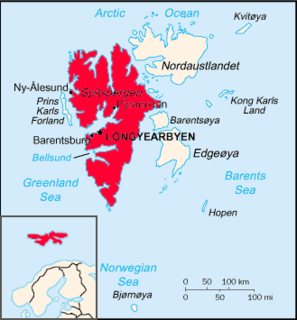 W
WCold-weather warfare, also known as Arctic warfare or winter warfare, encompasses military operations affected by snow, ice, thawing conditions or cold, both on land and at sea. Cold-weather conditions occur year-round at high elevation or at high latitudes, and elsewhere materialise seasonally during the winter period. Mountain warfare often takes place in cold weather or on terrain that is affected by ice and snow, such as the Alps and the Himalayas. Historically, most such operations have been during winter in the Northern Hemisphere. Some have occurred above the Arctic Circle where snow, ice and cold may occur throughout the year. At times, cold or its aftermath—thaw—has been a decisive factor in the failure of a campaign, as with French invasion of Russia in 1812, the Soviet invasion of Finland in 1939, and the German invasion of the Soviet Union during World War II.
 W
WThe Arctic convoys of World War II were oceangoing convoys which sailed from the United Kingdom, Iceland, and North America to northern ports in the Soviet Union – primarily Arkhangelsk (Archangel) and Murmansk in Russia. There were 78 convoys between August 1941 and May 1945, sailing via several seas of the Atlantic and Arctic oceans, with two gaps with no sailings between July and September 1942, and March and November 1943.
 W
WThe Arctic Circle defining the "midnight sun" encompasses the Atlantic Ocean from the northern edge of Iceland to the Bering Strait in the Pacific Ocean. Military activity in this area between 1939 and 1945 is often considered part of the Battle of the Atlantic or of the European Theatre of World War II. Pre-war navigation focused on fishing and the international ore-trade from Narvik and Petsamo. Soviet settlements along the coast and rivers of the Barents Sea and Kara Sea relied upon summer coastal shipping for supplies from railheads at Arkhangelsk and Murmansk. The Soviet Union extended the Northern Sea Route past the Taymyr Peninsula to the Bering Strait in 1935.
 W
WThe Navy's Arctic Submarine Laboratory (ASL) is a Fleet Support Detachment of Commander, Undersea Warfighting Development Center (UWDC).
 W
WBasis Nord was a secret naval base of Nazi Germany's Kriegsmarine in Zapadnaya Litsa, west of Murmansk provided by the Soviet Union. The base was part of a partnership that developed between Germany and the Soviet Union following German-Soviet Non-Aggression treaty of 1939, along with a broad economic agreement of 1940.
 W
WThe British North Russia Squadron was a squadron of the Royal Navy based at Murmansk from 1917 to 1919.
 W
WThe Distant Early Warning Line, also known as the DEW Line or Early Warning Line, was a system of radar stations in the far northern Arctic region of Canada, with additional stations along the North Coast and Aleutian Islands of Alaska, in addition to the Faroe Islands, Greenland, and Iceland. It was set up to detect incoming Soviet bombers during the Cold War, and provide early warning of any sea-and-land invasion.
 W
WOperation FB took place as part of the Arctic Convoys of World War II. The operation consisted of independent sailings by unescorted merchant ships between Iceland and Murmansk. In late 1942, Allies had taken the offensive against Germany but the dispatch of supplies to the USSR by convoy via the Arctic route was suspended, due to the demands of the Mediterranean campaign. Convoy PQ 19 was cancelled because the Home Fleet diverted ships to the Mediterranean for Operation Torch which would have had to be postponed for three weeks had ships been provided for PQ 19.
 W
WOperation Fritham was an Allied military operation during the Second World War to secure the coal mines on Spitsbergen, the main island of the Svalbard Archipelago, 650 mi (1,050 km) from the North Pole and about the same distance from Norway. The operation was intended to deny the islands to Nazi Germany.
 W
WOperation Gearbox was a Norwegian and British operation on the Arctic island of Spitzbergen in the Svalbard Archipelago, during the Second World War. Operation Fritham, an earlier expedition in two ships, arrived on 13 May but met disaster after being spotted by a Luftwaffe Ju 88 bomber. Next day, four Fw 200 reconnaissance bombers attacked and killed fourteen men, including Einar Sverdrup, the commander. Eleven men were wounded, two mortally, one ship was sunk and the other set on fire.
 W
WOperation Gearbox II was a Norwegian and British operation during the Second World War on the Arctic island of Spitzbergen in the Svalbard Archipelago. Operation Fritham, the first attempt to establish a base had been defeated when the two ships carrying the force were sunk by Luftwaffe bombers on 14 May.
 W
WThe fall of Denmark in April 1940 left the Danish colony of Greenland an unoccupied territory of an occupied nation, under the possibility of seizure by the United Kingdom or Canada. To forestall this, the United States acted to guarantee Greenland's position. However, with the entrance of the United States into the war in December 1941, Greenland became a combatant.
 W
WIce Exercise was a United States Navy mission in the Arctic Ocean.
 W
WThe North Russia intervention, also known as the Northern Russian expedition, the Archangel campaign, and the Murman deployment, was part of the Allied intervention in the Russian Civil War after the October Revolution. The intervention brought about the involvement of foreign troops in the Russian Civil War on the side of the White movement. The movement was ultimately defeated, while the Allied forces withdrew from Northern Russia after fighting a number of defensive actions against the Bolsheviks, such as the Battle of Bolshie Ozerki. The campaign lasted from March 1918, during the final months of World War I, to October 1919.
 W
WThe North Warning System (NWS) is a joint United States and Canadian early-warning radar system for the atmospheric air defense of North America. It provides surveillance of airspace from potential incursions or attacks from across North America's polar region. It replaced the Distant Early Warning Line system in the late 1980s.
 W
WThe Northern Fleet is the fleet of the Russian Navy in the Arctic.
USS O-12 (SS-73) was an O-class submarine of the United States Navy. These later O-boats, O-11 through O-16, were designed by Lake Torpedo Boat to different specifications than the earlier Electric Boat designs. They performed poorly as compared to the Electric Boat units, and are sometimes considered a separate class. The ship was launched in 1917 and entered service with the Navy in 1918 in the Panama Canal Zone.
 W
WOperation Blue Nose was a 1947 U.S. Naval mission to explore under the Polar ice cap in the Chukchi Sea in the Arctic using submarines. The operation consisted of the submarines USS BOARFISH (SS-327), USS CAIMAN (SS-323), and USS CABEZON (SS-334), and submarine tender USS NEREUS (AS-17) took part in CTG 17.3. Operation Blue Nose operated under-ice in the Chukchi Sea were under the command of RADM Allan R. McCann, Commander, Submarine Force, U.S. Pacific or COMSUBPAC.
 W
WOperation Nanook was an Arctic expedition undertaken by the United States Navy in 1946. It consisted of USS Norton Sound (AV-11), USS Atule (SS-403), USCGC Northwind (WAG-282), USS Alcona (AK-157), USS Beltrami (AK-162), and USS Whitewood (AN-63). The mission is mostly documented as cartographic in nature.
 W
WProject Iceworm was a top secret United States Army program of the Cold War, which aimed to build a network of mobile nuclear missile launch sites under the Greenland ice sheet. The ultimate objective of placing medium-range missiles under the ice — close enough to strike targets within the Soviet Union — was kept secret from the Government of Denmark. To study the feasibility of working under the ice, a highly publicized "cover" project, known as Camp Century, was launched in 1960. Unstable ice conditions within the ice sheet caused the project to be canceled in 1966.
 W
WThe USCGC Redbud (WLB-398) was one of 20 "C" class 180-foot (55 m) buoy tenders that entered service during World War II. She was assigned to the 7th Naval District and was based out of Miami, Florida, where she serviced aids to navigation. She was loaned to the U.S. Navy on 18 March 1949 and was redesignated as AKL-398 on 31 March 1949. The Navy had her converted at Long Beach, California and she was commissioned on 23 July 1949 under the command of LCDR F. E. Clark, USN.
 W
WOn 21 January 1968, an aircraft accident ; Danish: Thuleulykken) involving a United States Air Force (USAF) B-52 bomber occurred near Thule Air Base in the Danish territory of Greenland. The aircraft was carrying four B28FI thermonuclear bombs on a Cold War "Chrome Dome" alert mission over Baffin Bay when a cabin fire forced the crew to abandon the aircraft before they could carry out an emergency landing at Thule Air Base. Six crew members ejected safely, but one who did not have an ejection seat was killed while trying to bail out. The bomber crashed onto sea ice in North Star Bay, Greenland, causing the conventional explosives aboard to detonate and the nuclear payload to rupture and disperse, which resulted in radioactive contamination.
 W
WOperation Zitronella, also known as Unternehmen Sizilien (Sicily), was an eight-hour German raid on Spitzbergen, in the Svalbard Archipelago, on 8 September 1943. The battleships Tirpitz and Scharnhorst, plus nine destroyers, sailed to the archipelago, bombarded settlements in Isfjorden and covered a landing party. Six Norwegians were killed and 31 were taken prisoner; one German died of wounds and fifteen were wounded.